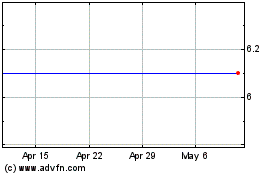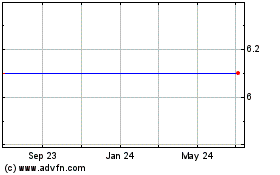By Jeannette Neumann
MADRID--Spanish banks face a new drag on their balance sheets:
Ana Botín.
In May, Banco Santander SA's executive chairwoman began offering
higher interest on checking account deposits in Spain, setting off
a scramble of similar offers by rivals worried about keeping their
customers.
The expense is an unwelcome headwind for Santander's
competitors. Spanish banks, including Santander's Spain unit, are
already struggling with sluggish demand for home loans, stiff
competition to issue business loans, and interest rates that seem
to hit an ever-lower nadir.
Those challenges contributed to the 8% drop in Caixabank SA's
net interest income in the third quarter compared with the second
and are expected to take a toll on other Spanish banks reporting
earnings results this week and next.
Santander's 1|2|3 account, as it is known, is expected to take a
particularly big toll on the profits of small, regional Spanish
lenders that lack an international presence to counterbalance slack
returns at home.
That makes such banks as Liberbank SA, Ibercaja Banco SA and
Unicaja Banco SA likely takeover targets or merger partners over
the next two or three years, analysts and bankers say.
Santander's account "represents a turning point in the cost of
deposits, " Carlos García González, an equity analyst at Société
Générale, wrote in an Oct. 21 report, and "will put additional
pressure on profitability in the system, ultimately forcing some
consolidation."
Spokespeople for Santander, Liberbank and Unicaja declined to
comment. Ibercaja didn't respond to requests for comment.
Larger Spanish banks are already competing with Santander. Since
the summer, Banco Popular Español SA, Banco Bilbao Vizcaya
Argentaria SA and Banco de Sabadell SA have launched new or
enhanced checking account deals that offer perks such as interest
on payroll deposits or bill payments.
Meanwhile, investors and analysts are debating the impact of the
1|2|3 account on Santander itself. They will be combing Santander's
balance sheet for clues when the bank reports third-quarter
earnings on Thursday.
Francisco Riquel, an analyst with Madrid-based
financial-services firm N+1 Group, estimates that Santander's Spain
unit will report a 4% decline in net interest income in the third
quarter compared with the second, driven largely by the expense of
the 1|2|3 account.
"In a low interest rate environment, the 1|2|3 account has its
merits for the clients, but not for shareholders, at least in the
short term," Mr. Riquel wrote in a July research report.
The Santander spokeswoman declined to comment.
The 1|2|3 account, based on one Ms. Botín launched when she led
Santander's U.K. unit, offers a 3% return on balances between
EUR3,000 and EUR15,000 plus a 2% return on local taxes and a 1%
return on utility bills paid from the account.
Clients pay EUR36 annually for the account. Their salary and
three bills must be deposited directly into the account.
Mr. García González estimated that Santander will pay the
average customer around EUR250 each year and swallow up around
EUR22 billion in new deposits over the next two years, a 2%
increase in market share.
The launch of the 1|2|3 account in the U.K. in 2012 helped
Santander attract millions of new clients there and transform the
bank it had bought from a London-based mortgage lender to a
full-service retail bank. Santander said in September that it was
raising the cost of maintaining that account starting in
January.
In Spain, Santander is already the country's largest bank by
market value and third largest in assets behind BBVA and Caixabank.
Some analysts and investors were surprised, therefore, that
Santander offered the 1|2|3 account to existing clients.
As of September, about 135,000 of the 500,000 clients who had
signed up for Ms. Botín's signature product in Spain had
transferred their payroll deposit from another bank, Santander
said. The remainder is clients who already had a payroll checking
account with Santander and swapped it for the new one, becoming
more expensive for the bank than they were before.
Investors and analysts said they would have expected the 1|2|3
account to attract more than 150,000 new clients by now, given how
lucrative it can be for some customers.
They attribute the slower-than-expected pace of capturing
converts to the fact that many Spaniards aren't used to paying a
commission for a checking account and the relative complexity of
the account's perks, which depends on factors such as the number of
products a customer has with the bank. Investors and analysts
expect the pace of transfers to pick up over the next year,
propelled by positive word-of-mouth feedback among clients.
Since Ms. Botín became executive chairwoman of Santander in
September 2014, she has tried to put her imprint on the bank she
inherited from her predecessor and father, Emilio Botín.
The 1|2|3 account is no exception.
While Mr. Botín's product launches typically brought in clients
quickly and expanded market share, Santander had a reputation for
poor customer service.
His daughter has said her focus is to keep existing clients
happy enough that they want to buy even more products from
Santander, even without a special offer.
"Being the best bank does not mean being the biggest bank," Ms.
Botín told investors and analysts in September. "It means being the
best for customer satisfaction, profitability and return to
shareholders."
Subscribe to WSJ: http://online.wsj.com?mod=djnwires
(END) Dow Jones Newswires
October 28, 2015 07:36 ET (11:36 GMT)
Copyright (c) 2015 Dow Jones & Company, Inc.
Banco Santander (NYSE:STD)
Historical Stock Chart
From Mar 2024 to Apr 2024

Banco Santander (NYSE:STD)
Historical Stock Chart
From Apr 2023 to Apr 2024
